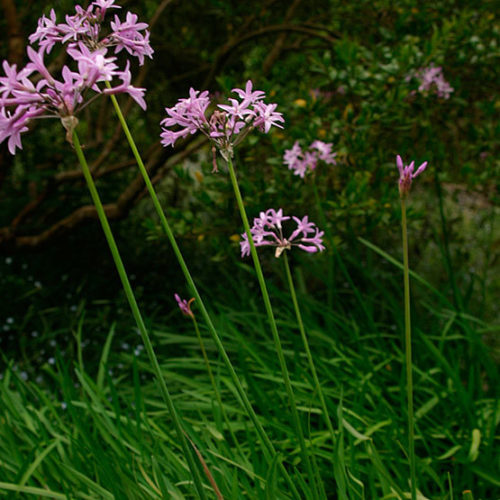Agapanthus Varieties: Choosing the Best for Your Landscape
Agapanthus Varieties: Choosing the Best for Your Landscape
Blog Article
Unleashing the Secret to Successful Agapanthus Growing: Tips and Techniques for a Flourishing Yard
In the world of horticulture, growing agapanthus efficiently calls for a critical strategy that includes numerous facets of plant care. By comprehending the nuances of agapanthus farming, one can produce an atmosphere where these plants flourish and grow abundantly.
Planting Agapanthus: Finest Practices
When planting Agapanthus, appropriate soil preparation is vital for ensuring successful development and advancement of these beautiful blossoms. Agapanthus, generally called Lily of the Nile or African lily, flourishes in well-draining dirt with a somewhat acidic to neutral pH degree - Agapanthus. Prior to planting, it is crucial to modify heavy clay dirts with raw material such as garden compost or peat moss to enhance water drainage and give necessary nutrients for the plants
To plant Agapanthus, pick an area that obtains complete sunshine to partial color, as this will certainly advertise healthy growth and bountiful blooming. Dig an opening twice the size of the plant's origin ball and position the Agapanthus at the exact same deepness it was formerly expanding. Carefully backfill the opening with soil, pressing down strongly to get rid of any air pockets around the origins.
Water the freshly grown Agapanthus extensively and proceed to keep the dirt equally moist, specifically throughout the plant's active growing period. Agapanthus. Using a balanced plant food once a month can better support the plant's development and flowering. By adhering to these finest practices for planting Agapanthus, you can produce a spectacular screen of these exciting blossoms in your garden
Suitable Soil Conditions for Agapanthus
For optimum development and blooming success of Agapanthus plants, ensuring the soil conditions are perfect is important. Agapanthus chooses dirt that is abundant in nutrients, so incorporating a well balanced fertilizer during the expanding season can promote healthy development and dynamic flowers.

Watering and Fertilizing Tips
To ensure healthy and balanced growth and vibrant flowers, proper watering and fertilizing methods are vital for successful Agapanthus cultivation. Agapanthus plants profit from routine watering, especially during the expanding period.
When it pertains to feeding Agapanthus, a well balanced fertilizer with equal parts nitrogen, phosphorus, and potassium can be applied in the springtime to promote healthy growth and flowering. Slow-release plant foods are excellent for supplying nutrients gradually over a prolonged period. Avoid over-fertilizing, as this can lead to excessive foliage development at the cost of blossoms.
Furthermore, incorporating natural matter like compost into the soil can boost nutrient degrees and boost dirt structure, helping in the general health and wellness of the Agapanthus plants. By following these watering and fertilizing suggestions, garden enthusiasts can guarantee their Agapanthus plants prosper and generate magnificent displays of blossoms.
Pruning and Deadheading Methods
Correct pruning and deadheading techniques play a vital function in maintaining the health and visual appeals of Agapanthus plants, enhancing the necessary practices of watering and feeding for effective farming. Trimming Agapanthus involves eliminating invested flower heads, yellowing or dead fallen leaves, and overall shaping of the plant to advertise much better growth. Deadheading, the procedure of removing faded flowers, not just improves the plant's appearance yet also urges additional growing.
When deadheading Agapanthus, it is recommended to clip off the flower stem at the base using sharp, clean shears. This procedure redirects the plant's power from seed production back into origin and foliage growth, advertising a much healthier and a lot more durable plant. Routine deadheading can prolong the flowering duration of Agapanthus and stop self-seeding, which can cause congestion.
In regards to trimming, Agapanthus normally take advantage of a light trim after blossoming to clean up the plant and motivate fresh development. Reducing the spent flower stems and getting rid of any type of damaged or dead vegetation aids maintain the plant's vigor and total appearance. Nonetheless, it is necessary to prevent reducing right into the crown of the plant, as this can compromise its health and Website wellness.

Protecting Agapanthus From Vermins and Diseases
Carrying out reliable insect and illness administration strategies is important to guarding the wellness and vitality of Agapanthus plants in cultivation. Agapanthus are generally hardy plants, but they can still fall victim to different parasites and illness if not appropriately cared for. One usual insect that influences Agapanthus is the Agapanthus borer, a caterpillar that tunnels into the plant, causing damage to the flowers and leaves. To avoid invasions, routine evaluation of the plants is essential. If borers are detected, they can be manually eliminated, or insecticidal soap can be made use of as a control action.
In enhancement to pests, Agapanthus are prone to diseases such as origin rot and fungal leaf spots. By remaining attentive and addressing insect and disease issues without delay, gardeners can help their Agapanthus thrive and grow.

Conclusion
Finally, successful cultivation of agapanthus calls for correct growing strategies, excellent soil conditions, appropriate watering and fertilizing, normal trimming and deadheading, and defense from bugs and diseases. By following these tips my site and techniques, garden enthusiasts can guarantee a prospering garden loaded with gorgeous agapanthus blossoms. Agapanthus. Bear in mind to keep consistent YOURURL.com care and interest to information to advertise the health and long life of these magnificent plants
When planting Agapanthus, proper dirt prep work is necessary for ensuring successful growth and development of these stunning flowers.Water the newly grown Agapanthus completely and proceed to keep the dirt equally moist, specifically throughout the plant's energetic expanding period.For optimal growth and flowering success of Agapanthus plants, making certain the dirt problems are perfect is vital. When hair transplanting or planting Agapanthus, ensure the soil is well-prepared to give the necessary structure for the plants to develop themselves successfully. One typical bug that affects Agapanthus is the Agapanthus borer, a caterpillar that tunnels into the plant, causing damage to the fallen leaves and blossoms.
Report this page